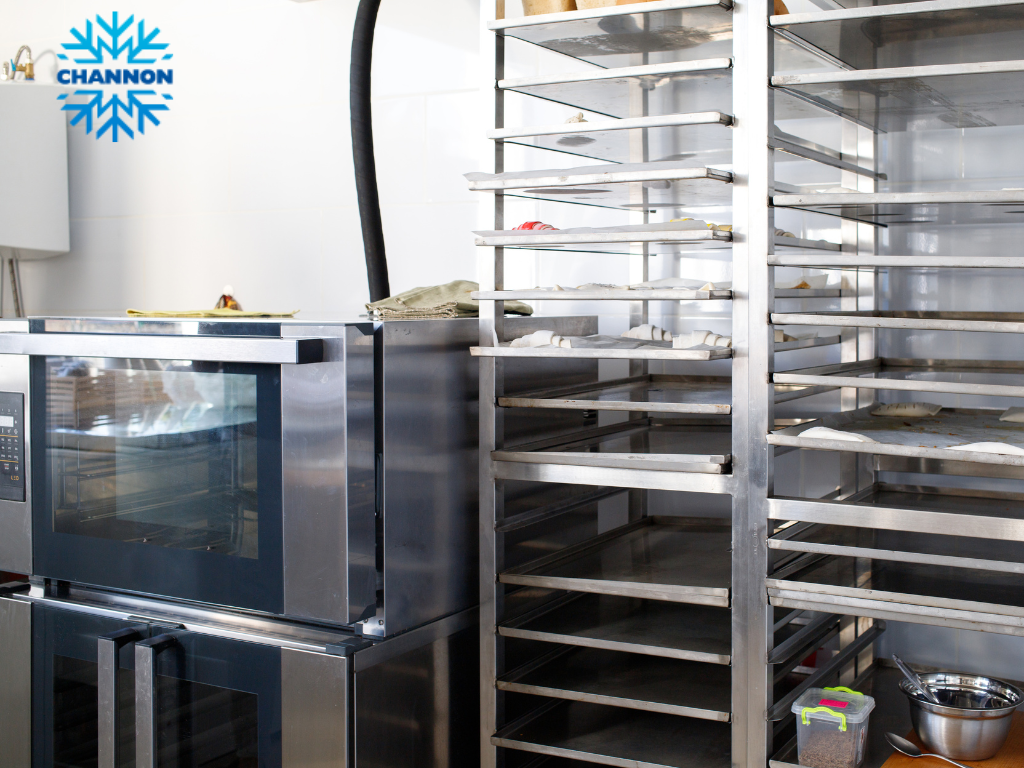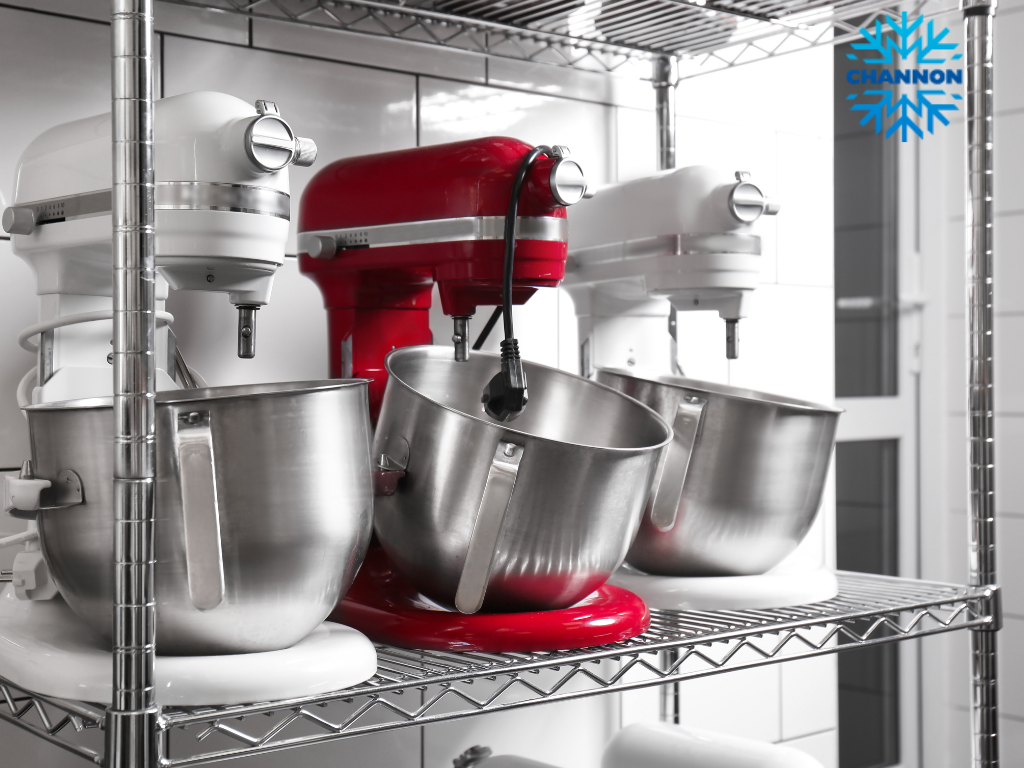Maintaining bakery equipment is not just a necessity for the smooth operation of a bakery; it’s a critical practice that can significantly impact the longevity and safety of the machinery. Regular maintenance ensures that equipment functions efficiently, preventing unexpected breakdowns that can lead to costly repairs or replacements, and potential safety hazards. Each piece of machinery, from mixers and ovens to proofers and sheeters, has its own set of maintenance requirements. An understanding of these needs is essential for bakery owners to ensure their investments are well-protected and their operations run without a hitch.
Developing a Maintenance Schedule

-
Assessing Your Equipment
The first step in effective maintenance is to assess the needs of each piece of equipment. Manufacturers often provide maintenance guidelines, but the actual usage, age, and condition of the equipment also play a role in determining its specific maintenance requirements.
-
Creating a Timeline
Once the needs are assessed, creating a maintenance timeline is crucial. This schedule should include daily, weekly, monthly, and annual tasks. Regular inspections and servicing can prevent minor issues from escalating into major problems, and systematic cleaning is essential for hygiene and performance.
-
Record-Keeping
Maintaining detailed records of all maintenance activities is a best practice that can help bakery owners track the health of their equipment over time. Service histories can be invaluable for troubleshooting issues, planning budgets for future maintenance, and ensuring compliance with health and safety standards.
Daily and Weekly Maintenance Tasks
-
Cleaning Protocols
Daily cleaning protocols are fundamental to bakery equipment care. They typically involve removing food debris, wiping surfaces, and sanitizing where necessary. Each type of equipment will have specific cleaning requirements; for example, ovens may need ash and baking residues removed, while mixers may require disassembly for a thorough clean.
-
Inspection Routines
Weekly inspections can catch potential issues before they become significant problems. These checks might include looking for wear and tear on seals and gaskets, ensuring moving parts are lubricated appropriately, and checking for any signs of malfunction.
Professional Servicing and Repairs
-
When to Call the Pros
Even with the best maintenance routines, some equipment issues will require professional technical support. Recognizing when a problem is beyond the scope of routine maintenance is key to preventing further damage. Signs that professional help is needed include unusual noises, irregular performance, or visible wear that could indicate a deeper issue. Technical support should be engaged when the repairs are complex, safety is a concern, or when specialized knowledge is needed to diagnose and fix the problem.
-
Selecting a Service Provider
Choosing a reliable service provider for bakery equipment is a decision that affects both operational efficiency and the bottom line. Look for providers with certified technicians who have experience with your specific type of equipment. Check their reputation through reviews or industry references, and ensure they offer timely service guarantees. A trustworthy provider will be transparent about their rates, offer detailed invoices, and explain the necessary repairs.
-
Cost Management
Regular professional servicing can help avoid the higher costs of emergency repairs. Include the cost of regular check-ups and servicing in your financial planning to manage maintenance expenses proactively. Compare service contracts versus on-demand servicing to determine which is more cost-effective for your operation.
Technical Support Solutions
-
In-House vs. Outsourced
The decision between developing in-house technical support capabilities or outsourcing depends on factors such as the size of your operation, the complexity of your equipment, and cost considerations. Training in-house staff can be beneficial for immediate troubleshooting and minor repairs, while outsourcing can provide access to a broader range of expertise and may be more cost-effective for specialized or less frequent issues.
-
Remote Assistance
With advances in technology, remote assistance has become an invaluable tool for troubleshooting equipment issues. Many service providers now offer remote diagnostics, which can quickly identify issues and even resolve some problems without the need for an on-site visit. This can be a cost-effective and timely support solution.
Handling Equipment Downtime

-
Minimizing Impact
Equipment downtime is inevitable during servicing and repairs, but its impact on operations can be mitigated. Having backup equipment, when possible, or scheduling servicing during off-peak times can help. Educate your team on how to handle reduced production capacity, and maintain open communication with customers if product availability is affected.
-
Contingency Planning
Developing a contingency plan for unexpected equipment failures is essential. This plan should outline steps to continue operations, such as utilizing alternative equipment, rearranging production schedules, or temporarily adjusting the menu. Being prepared for equipment downtime helps minimize disruption to your business and provides peace of mind.
Handling Equipment Downtime
-
Minimizing Impact
Equipment downtime in a bakery can disrupt operations significantly. To manage this effectively, bakeries can implement strategies such as cross-training staff to perform multiple roles, which ensures that productivity remains steady even when key equipment is unavailable. Stockpiling inventory in anticipation of downtime, especially for high-demand products, can help maintain supply and customer satisfaction. Additionally, having a plan for manual processes to temporarily replace machine-reliant tasks can keep the bakery operational, albeit at a potentially reduced capacity.
-
Contingency Planning
Every bakery should have a contingency plan for unexpected equipment failures. This includes identifying local repair services that offer quick response times, understanding the lead times for parts that commonly need replacement, and having a financial buffer to handle urgent repairs. It is also wise to develop relationships with equipment rental companies or explore partnerships with other local bakeries to share resources in a pinch.
Upgrading Equipment Software and Hardware
-
Staying Up-to-Date
Keeping bakery equipment software and hardware up-to-date is crucial in maintaining operational efficiency and capitalizing on the latest advancements in baking technology. Regular updates can enhance functionality, improve energy efficiency, and even extend the life of the equipment.
-
Upgrade Processes
Bakery owners should schedule regular assessments of their equipment’s technological standing. Upgrades should be planned during slower business periods to minimize impact on production. It’s also important to train staff on any new features or operational changes that come with equipment upgrades. In some cases, bringing in a technical expert to oversee the upgrade process can ensure a smooth transition and proper integration of new technology.
Conclusion
The importance of regular maintenance and access to reliable technical support cannot be overstated in the bakery industry. These elements are fundamental to the efficiency, longevity, and profitability of bakery equipment. As the bakery industry continues to evolve with new technologies, staying proactive in equipment maintenance and fostering strong relationships with technical support providers will be key to success. Bakery owners are encouraged to view regular maintenance not as an expense but as an investment in their business’s future, ensuring that their operations continue to run smoothly and effectively for years to come.

